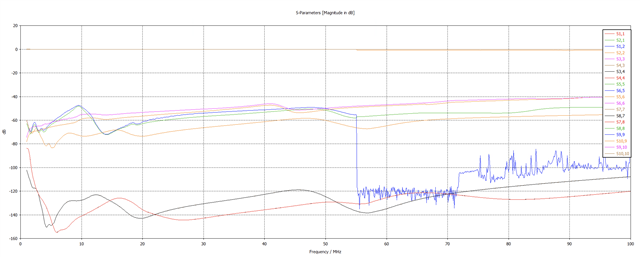Hello Guys,
Good day.
My customer is testing and simulating the insertion loss of the TI DRV8343X-Q1EVM board input filter. It appears the insertion loss on the board doesn't match what is expected of the circuit. He is sure the circuit is correct because he simulated the raw circuit elements and they behaved as predicted. When he connected a VNA to the input side of the filter before the inductor L1 and output side after the inductor L1 what he is getting doesn't make sense. It seems like the inductor is not populated on the board even though the part is there.
The measure loss does not match the expected loss with the inductor being present. Only removal of the inductor does the expected (simulated) loss match the measure loss. Any thoughts on this?
I might direct the customer directly to this thread for him to better explain his use case.
Thanks!
Art



